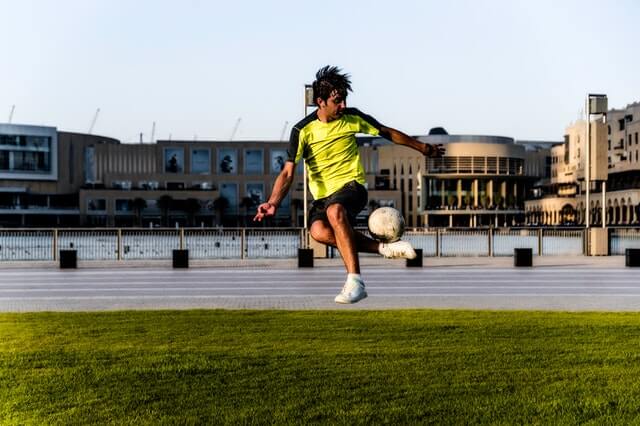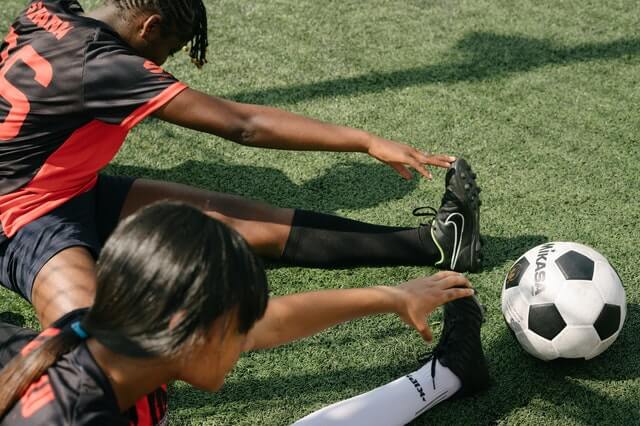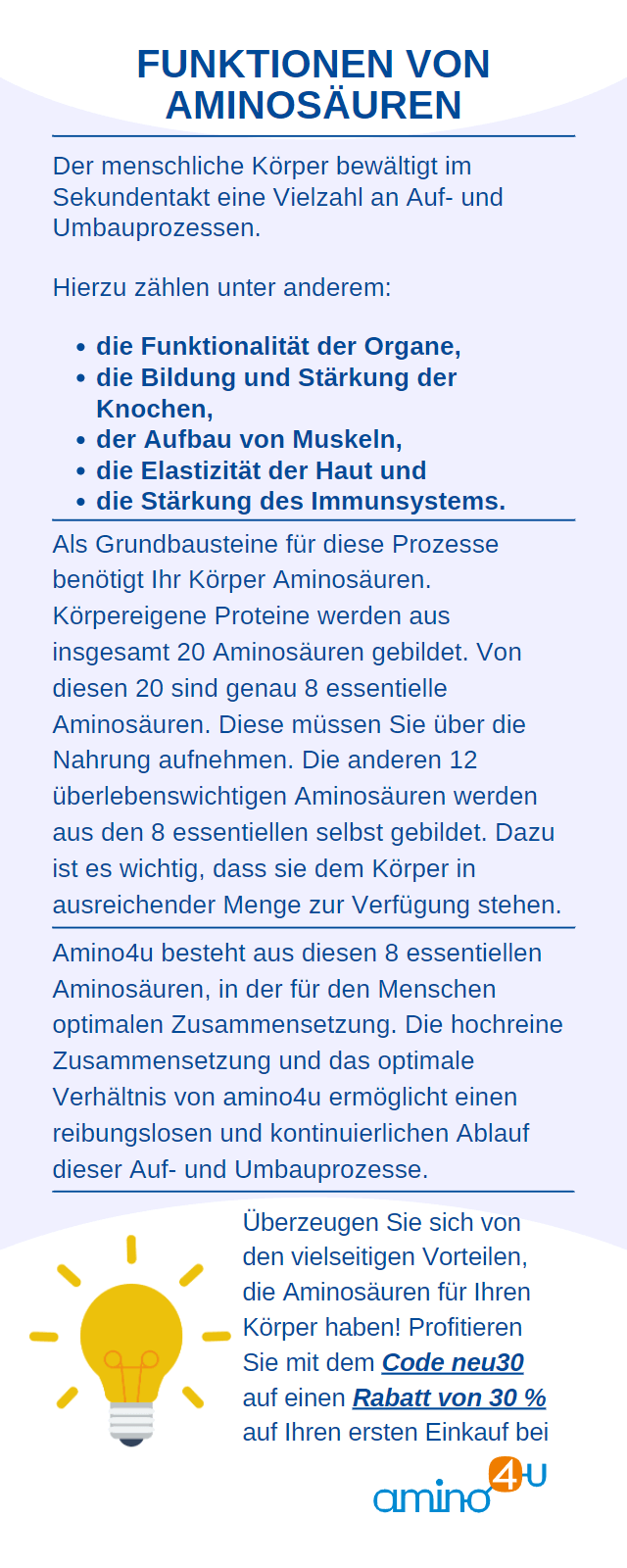Top footballers owe their explosive power primarily to well-trained muscles. Strength training sessions strengthen the endurance and performance of the entire footballer's body. That's why football strength training is playing an increasingly important role. Similar to strength training for runners, it is increasingly becoming the focus of perfect training preparation. Various training options provide variety. Find out more about the topic.
Football and its demands on the body
This sport demands a lot from your physical fitness. Most muscle groups are in demand when it comes to explosive power, speed and more performance on the green grass. Core stability and total body strength are the focus of attention. All three types of force are addressed .
Footballers need:
- Speed to be able to move the ball exclusively towards the opponent's goal. Maximum speed must be achieved within the shortest possible time so that a player can also manage a quick sprint.
- Strength endurance . It allows the player to move sustainably over a longer period of time.
- Maximum strength as the basis for the other two types of strength. It creates a maximum value of force that can be provided against resistance from muscles and nerves.

Strength training football: 7 training tips
Strength training sessions not only ensure the development of different types of strength. They can also help prevent injuries. Muscles protect the joints. The likelihood of the common and dreaded thigh injuries can also be reduced through strength training. The thigh training also protects the knees.
Another factor in strength training for footballers is correcting imbalances in the muscles. Soccer-specific training puts intense strain on certain muscles and not others. Muscular imbalance is its own risk factor for injury . In addition, posture and movement patterns can suffer from unevenly trained muscles.
This can lead to faster wear and tear in certain parts of the body and the resulting developments such as osteoarthritis. Strength training rounds off the football player's training activities .

1. Focus on core, leg and abdominal muscles
Soccer players particularly benefit from strength training for the lower back, legs and abdominal muscles . These muscles stabilize the entire body. The player can also lay the foundation for developing speed and maximum strength here. Training should be balanced to stabilize the entire body.
2. Training variations bring more
Footballers can incorporate strength training into their training schedule in different ways. It's not just about going to the gym. Strength training without equipment or strength training at home are also possible options. Variety during training makes it more fun and avoids one-sided stress.
3. Train without equipment and at home
Many strength training sessions for footballers are conceivable without equipment and in a home context.
For example, all forms of...
- squats,
- Squats and
- Planks
play a role. Check out the following examples:
4. Train specific areas
Even without equipment, very demanding exercises that target specific areas are possible. For example, when it comes to strength training for explosiveness , a lot can be achieved with just a few specific training sessions:
5. Work out at the gym
The gym offers various equipment and free weight exercises for your strength training as a footballer :
6. Additions to the strength training units
For a long time, stretching after strength training was an integral part of strength training sessions . There are now different opinions on this. It was previously said that stretching after training could reduce muscle soreness . Sports medicine findings now speak against this view. Some people even believe that static stretching could actually intensify muscle soreness.
There is still scientific evidence that stretching after exercise could reduce the risk of injury. The study structure is not clear.
Most exercise experts recommend stretching after strength training . Footballers should be able to particularly benefit from this because stretching trains certain typical movements that can become crucial in the game. The stretching exercises should also improve flexibility and mobility. A typical movement sequence could look like this:
7. Strength training and sore muscles
Soccer players ask themselves this question again and again : Training despite sore muscles ? Here too, similar to stretching, the view has changed over time. It used to be common practice to train against sore muscles. This is no longer recommended today. Muscle soreness is caused by fine muscle tears (micro-injuries) in the muscle.
After intensive training, the muscles need to regenerate. This doesn't just apply to football and football players: muscle growth takes place in the regeneration phase. Football strength training must take this principle into account. Sore muscles are not the end of all sporting activities. However, the muscle parts affected by sore muscles must be able to recover .
Training despite muscle soreness is possible if other muscles are trained. A training plan takes the issue of muscle soreness into account and targets different muscle groups for strength training on different days.
Strength training football: How does muscle building and nutrition work?
Anyone who is successful in football will already have their diet tailored to this sport. Nutrition also plays a role in strength training. Muscle growth requires building material . Proteins (protein) and the smallest building blocks of protein ( amino acids ) are the building materials for the muscles. Anyone who is very committed to sport and wants to build muscle may have a higher protein requirement.
On average, experts estimate the daily protein requirement to be 0.8 g/kg of body weight. In athletes such as footballers, this requirement can reach values of 1.6 g to 2.1 g/kg of body weight. In this context, it may make sense to include additional amino acids . In addition, a varied and protein-rich diet is essential.
Since the combination of plant and animal protein in particular is excellent for the human body to utilize, vegetarians and vegans can be at a disadvantage when it comes to protein supply. Whether an additional supply of protein is necessary is always a very individual question.

Training plan for footballers
A weekly plan for footballers should include different units for strength training and football training. For example, if training is planned on Monday, strength training for the legs can be integrated on Tuesday.
Football strength training should be spread throughout the week to target the essential muscle groups such as...
- Legs,
- Hull and
- Belly
take into account.
It is ideal if you only train a specific muscle group in one day. Even for strength training without equipment , the different training focuses must be taken into account. Similar to strength training for runners and other ambitious athletes, a rest day can also be on the program.
Why is strength training part of football?
Strength training and football are not mutually exclusive . Rather, strength training sessions form the basis for strong performance on the pitch. Football is even more fun when strong muscles enable you to use quick, explosive power. A wide variety of training is possible in the strength training units.
Units in the gym can alternate with strength training at home and with or without equipment . Stretching after strength training should also always be integrated. Caution is advised when training despite muscle soreness. Stressed muscles need rest periods so that the fine micro-tears in the muscles heal and the growth of the muscles is stimulated.
Muscles do not grow during training , but rather during recovery periods. A training plan for footballers should be varied. Here pure football training alternates with strength training units. The diet can also be tailored to the additional strength training.
Keep in mind that you supply your muscles with enough amino acids and proteins for growth. As a soccer player, you can learn a lot from strength training for runners . As a soccer player, you need endurance and sprinting strength. This is similar with some running sports.



